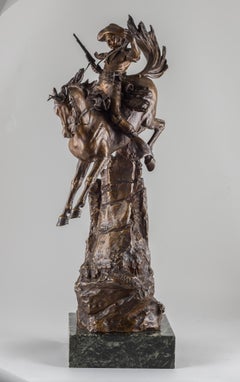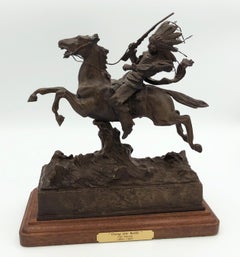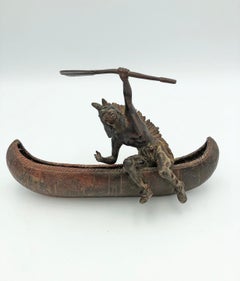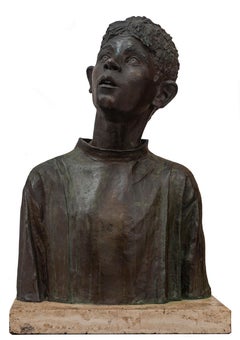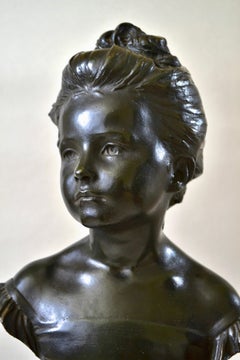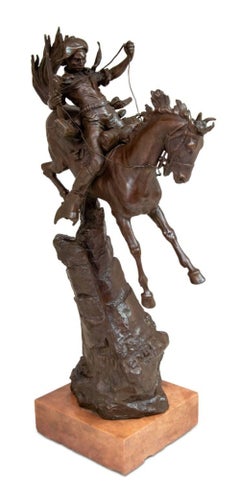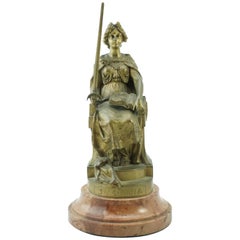Carl Kauba Figurative Sculptures
Austrian sculptor Carl Kauba was fascinated by the American West, creating dynamic cast bronze sculptures of cowboys, Native Americans and buffalo. Between 1895 and 1912, his polychrome pieces captured the attention of an American audience, while his domestic statutory work in Austria helped solidify his artistic reputation.
He was born the son of a shoemaker in 1865 in Vienna, Austria. He later studied at the Academy of Fine Arts in Vienna before learning from sculptor Karl Waschmann and sculptor and medallist Stefan Schwartz.
Although some accounts have Kauba traveling to the United States to create models and sketches, scholars have questioned the inaccuracies in his work’s weapon detailing and equestrian costumes. Kauba loved the Western tales of German author Karl May and was known to have a friend in Ohio who mailed him costume material, all of which may have provided his references for art.
Kauba’s bronze work is recognized as exceptional Viennese craftsmanship imbued with artistic intricacies and realism. His sculptures of cavalrymen, cowboys and Indigenous people from the American West put him in the same category as titans of American Western art like Frederic Remington and Charles Marion Russell.
Original Carl Kauba art experienced a resurgence in popularity during a 1950s advertising campaign for Latendorfer in New York. His works have remained prized by Wild West collectors everywhere.
Kauba’s art has been exhibited at many American art galleries, including the Thomas Nygard Gallery in Montana and the Ophir Gallery in New Jersey.
On 1stDibs, find a collection of Carl Kauba decorative objects, collectibles and more.
Early 20th Century Carl Kauba Figurative Sculptures
Bronze
Early 20th Century Realist Carl Kauba Figurative Sculptures
Bronze
Early 20th Century Realist Carl Kauba Figurative Sculptures
Bronze
Mid-20th Century Realist Carl Kauba Figurative Sculptures
Bronze
1890s Realist Carl Kauba Figurative Sculptures
Bronze
Late 19th Century Realist Carl Kauba Figurative Sculptures
Bronze
2010s Abstract Carl Kauba Figurative Sculptures
Bronze
2010s Abstract Carl Kauba Figurative Sculptures
Bronze
1870s Realist Carl Kauba Figurative Sculptures
Bronze
2010s Realist Carl Kauba Figurative Sculptures
Bronze
1860s Realist Carl Kauba Figurative Sculptures
Bronze
Late 19th Century Realist Carl Kauba Figurative Sculptures
Bronze
21st Century and Contemporary Abstract Carl Kauba Figurative Sculptures
Bronze
Early 19th Century Realist Carl Kauba Figurative Sculptures
Marble, Bronze
Early 2000s Modern Carl Kauba Figurative Sculptures
Bronze
Early 20th Century Naturalistic Carl Kauba Figurative Sculptures
Bronze
Early 1900s Carl Kauba Figurative Sculptures
Bronze
Early 20th Century Realist Carl Kauba Figurative Sculptures
Bronze
19th Century Carl Kauba Figurative Sculptures
Bronze
